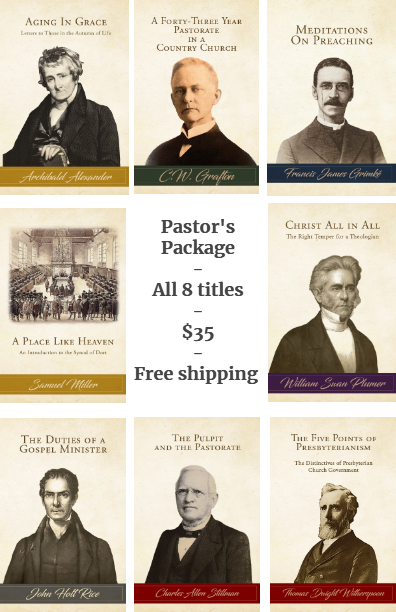Receive our blog posts in your email by filling out the form at the bottom of this page.
The practice of employing communion tokens represents a chapter of church history well worth studying. Their use predates the Reformation by many centuries, but it was in the Protestant Reformation that usage of communion tokens really became part of Reformed church history. Walter L. Lingle, in his introduction to Mary McWhorter Tenney’s classic study of Communion Tokens (1936) [not yet available on Log College Press], writes of the significance of communion tokens.
The Communion token stood for something. It was usually a small piece of metal which served as a ticket of admission to the Communion table. As the Communion season approached preparatory services were held. The people were examined by the ministers and elders as to their knowledge of the way of life and as to their way of living. Only those who were approved receive the tokens and only those who had tokens could approach the Communion table. People took their religion seriously in those days.
Mrs. Tenney writes of the origin of this practice in the early church and traces its reappearance in the Reformation to Geneva, Switzerland in 1560 where John Calvin and Pierre Viret helped to bring back the custom as a way of keeping the Lord’s Supper from being profaned by the scandalous and the profane (p. 17).
Used throughout Europe, especially in Scotland, the custom of employing communion tokens was transplanted to America as Protestants migrated there, particularly in the 18th century. In 1747, Presbyterians in Virginia were small in numbers but scattered throughout the center of the British and Anglican colony. The labors of Francis Makemie on the Eastern Shore a half century previously had born fruit, but when Samuel Davies was sent by the Presbytery of New Castle (Delaware) that year as a missionary to Virginia, at that time very spiritually dry, he was used by the Lord as part of a Great Awakening which was then spreading over the land. Davies would ultimately help to organize seven churches in five counties with very little in the way of additional manpower. (We have written previously of how Davies had to ride on horseback over a wide parish and once got lost in the woods.)
George Pilcher writes that “a prominent facet of Davies’ pastoral work [was] his use of tokens….Virginia Presbyterians adhered to this [Protestant] practice closely, identifying it with the process of catechetical instruction.” He goes on to say (Samuel Davies: Apostle of Dissent in Colonial Virginia, p. 93) that
In using tokens, Davies was following the established customs of Scottish Presbyterianism and apparently was trying to make his practice conform to this claim of being a member of the Church of Scotland. But instead of using the Presbyterians’ traditional small stamped metal disks, the New Light minister distributed engraved cards that allowed him to present longer inscriptions or passages of his own poetry pertinent to the event, such as:
Do this says Christ ‘till Time shall end,
In Memory of your dying Friend.
Meet at my Table and Record
The Love of Your departed Lord.The cards also were probably less expensive than metal disks, although they were made from steel engravings, which no doubt had to come from England. Davies placed a high value on these cards and exercised painstaking care in their preparation.
Samuel Davies’ paper communion token used at the Polegreen Church, Hanover, Virginia. Source: Presbyterian Historical Society, Philadelphia, Pennsylvania, and Union Seminary, Richmond, Virginia.
The story is told in James W. Alexander, The Life of Archibald Alexander, pp. 180-181, of how Mr. and Mrs. John Morton, members of the Anglican Church, were moved to attend an “action sermon” preached by Davies, whereupon, in the middle of the service, Mr. Morton called on Rev. Davies to admit him to the sacrament, and after further examination by the minister, Mr. Morton was given a communion token and allowed to participate.
The communion tokens employed by Davies were part of an historic tradition that was in widespread use in his day among Presbyterians, but they were remarkable in that they were made of paper rather than metal and also in their use of sacramental poetry by Davies himself.*
They represent a special facet of a bygone Protestant and Presbyterian tradition which illustrates how seriously the duty of fencing the table was taken and what a privilege it is to being admitted to the table of the Lord. As we look back on this bit of church history, consider how important these little paper tokens were to Davies and his flock of Virginia Presbyterians as emblems of Christ’s love to them, which made them precious indeed.
* “A Token For the Sacrament” appears in Richard Beale Davis, ed., Collected Poems of Samuel Davies, 1723-1761 (1968), p. 157.


















